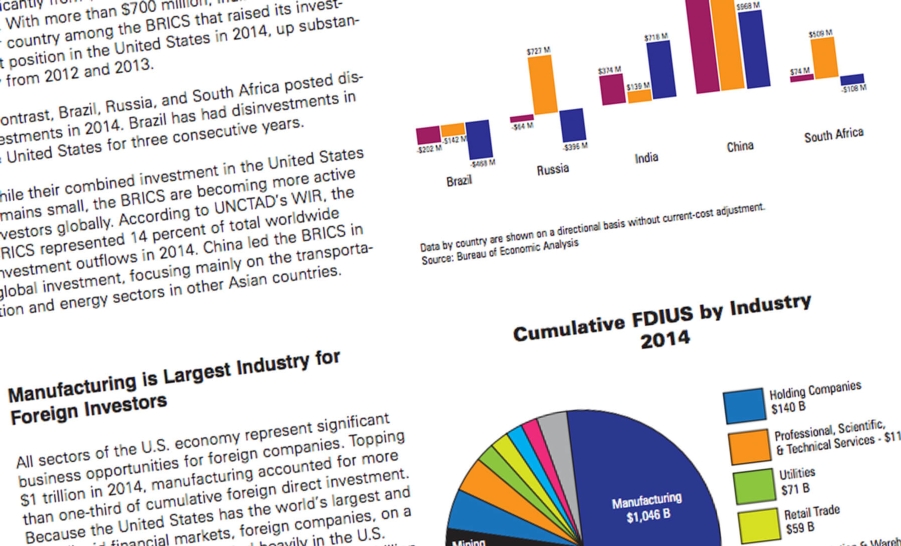
FDIUS 2016 Report
Foreign direct investment in the United States, known as FDIUS, totaled $2.9 trillion through 2014 on a historical-cost basis. Each year foreign firms make new investments in the United States, which benefit the American economy in numerous ways. They build new factories, grow their well-established U.S. operations, fund research and development, and employ millions of Americans in well-paying jobs.
In 2014, international firms invested $112 billion in the U.S. economy, down nearly 50 percent from 2013, making it the lowest level of FDIUS in a decade. What would have otherwise been a strong year was marred by a large $130 billion divestment by British Vodafone of Verizon. The illustration on the right shows equity inflows of $127 billion in 2013 reversed to a $30 billion disinvestment in 2014.* In contrast, both reinvestment of earnings and debt instruments rose in 2014.
Worldwide investment followed a similar pattern. Globally, annual foreign direct investment (FDI) inflows shrank 16 percent between 2013 and 2014 due to a fragile global economy, policy uncertainty, and increased geopolitical risks, according to the United Nations Conference on Trade and Development (UNCTAD) World Investment Report 2015 (WIR). Foreign investment prospects in 2015 are much more promising for the United States. In just the first three quarters of 2015, FDIUS already had exceeded $320 billion. Barring a disinvestment in the fourth quarter, 2015 could be a record-breaking year.
